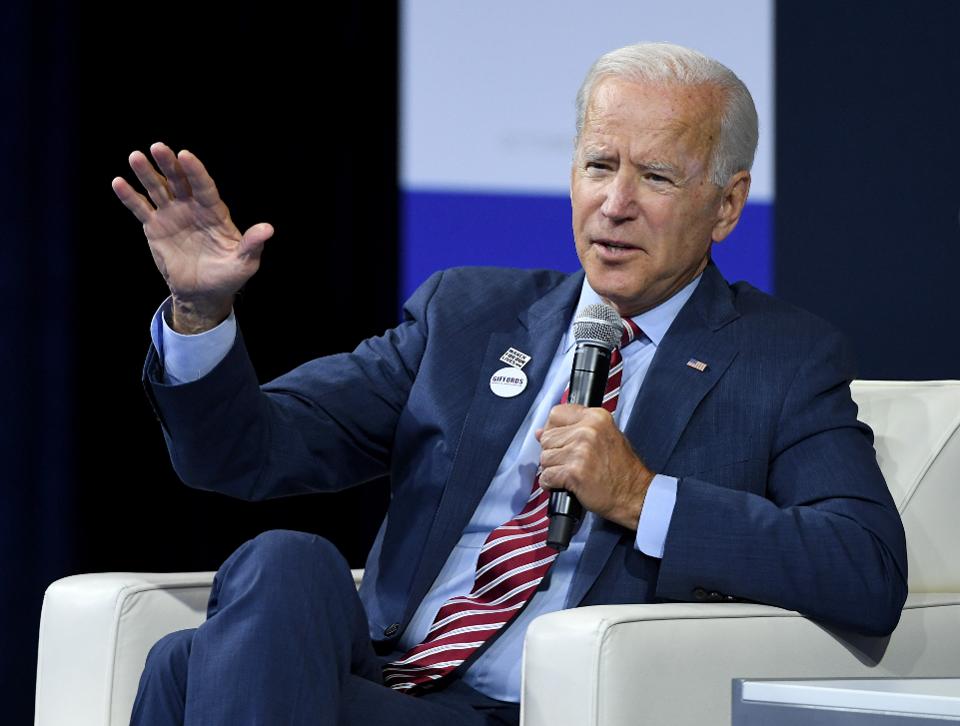
Much of the current media-reported posturing by policy makers and pundits about the failure of U.S. colleges and universities to adequately prepare people for the 21st workplace is either ill informed or misguided, in my opinion.
One of the dominant narratives in the media is that we need to produce more workers now who can do whatever is needed now, using short-term postsecondary certification programs. The focus is typically on “vocational” skills, contrasted with what too often are characterized as relatively useless liberal education outcomes, including knowledge of world history and cultures and other “indulgences” such as crafting understandable prose and judging the veracity and utility of information.
To make it easier for employers to identify competent workers, a litany of badges, certificates, and the like will purportedly signal proficiency. In some yet-to-be-demonstrated manner, these proxies will then be stacked and sewn together by a trusted entity to warrant conferral of what traditionally has been considered a college degree. Along the way, it’s assumed that learners of any age will independently bring coherence to and cultivate depth of understanding from these various experiences.
Another narrative is framed by a chorus of CEOs and managers who bemoan that too many job applicants with associate and baccalaureate degrees cannot write coherent paragraphs, clearly explain complex problems, or work effectively with people who differ from themselves. And this is after several years of postsecondary study, not the few weeks or months needed to earn a badge. At the same time, many business leaders say that they prefer candidates who not only can do today’s work, but who will be able to continue to learn on their own in real time to do tomorrow’s work — jobs that have not yet been invented. Is there a badge or certificate to certify skills for jobs that haven’t even been invented yet?!
Of course, short-term vocational skills-based programs are critically important and well suited for many people. This has always been true and will continue to be so. But is this an acceptable policy choice for addressing the demands of the 21st century workplace and fixing the shortcomings of American higher education at this point?
No, and here’s why.
We’ve known for many decades that there are no short cuts to cultivating the habits of the mind and heart that, over time, enable people to deepen their learning, develop resilience, transfer information into action, and creatively juggle and evaluate competing ideas and approaches. These are the kinds of proficiencies and dispositions needed to discover alternative responses to challenges presented by the changing nature of today’s jobs or for work not yet invented. Workplaces, societal institutions, and the world order are only going to get more complicated and challenging to navigate and manage, increasing the need for people with accumulated wisdom, interpersonal and practical competence, and more than a splash of critical thinking, analytical reasoning, and altruism.
Intentionally shortening and fragmenting educational and personal development in the name of bolstering economic productivity now is shortsighted and does a catastrophic disservice to individuals, our national prosperity, and the long-term well-being of a civil, democratic society. What’s also troubling is the likelihood that learners from historically underserved groups — low income and ethnic minorities, for example — will be disproportionately represented among (or maybe even tracked into) short-term training programs. Students from these groups made up the majority of those who were duped by the misleading ROI promises of more than a few costly for-profit institutions, such as Corinthian Colleges, ITT Technical Institutes, and Education Corporation for America.
There is no way to know for sure, but I suspect that many of those vigorously proposing short term vocational education steer their own children toward baccalaureate-granting colleges or universities. Attending such schools increases the odds that students will have to broaden their perspectives, read and write a fair amount, and devote significant effort over an extended period of time pondering difficult questions and generating alternative solutions to complicated problems — the stuff of which the future will be made.
We need business leaders to speak often and consistently with one voice about the perils of trying to do too much too fast on the cheap in education. The discourse about what the country needs from its postsecondary system needs re-balancing and grounding in what clear-minded captains of industry have learned from experience and what the educational research shows matters to preparing people for a self-sufficient, civically responsible, and personally satisfying life.
Granted, there is much room for improvement in American higher education. However, when a college or university intentionally designs and induces students to participate in high-impact learning activities inside and outside the classroom, the outcomes are much better contrasted with students who do not have such experiences. The benefits of participating in high-impact practices such as writing intensive courses, undergraduate research, community service projects and internships are especially promising for historically underserved students who will make up a large fraction of tomorrow’s workers and community leaders. Unfortunately, too few students participate in these activities, a problem that institutions such as California State University Dominguez Hills, Worcester Polytechnic Institute, Springfield College and many others are addressing by modifying curricular offerings to require students to do them.
Abbreviating postsecondary preparation programs may well reduce short-term costs for students, institutions, and many employers. However, privileging short-term job training over demanding educational experiences associated with high-levels of intellectual, personal, and social development — a foundation for continuous life-long learning — is a bad idea for individuals, for the long-term vitality of the American economy, and for our democracy.
[“source=hbr”]








 Lets put the bitter facts first so as you chew or go further down, things become sweeter. If you think you are in business for over 3 months and have still not managed to bag 250 visitors to your blog on a daily basis, it is time you should consider guest blogging. Simply put, you should write for other sites than spending time on your own, with the ultimate aim of getting visitors to your site.
Lets put the bitter facts first so as you chew or go further down, things become sweeter. If you think you are in business for over 3 months and have still not managed to bag 250 visitors to your blog on a daily basis, it is time you should consider guest blogging. Simply put, you should write for other sites than spending time on your own, with the ultimate aim of getting visitors to your site.






 Amber Bouman
Amber Bouman
 The Internet has largely changed everything, from our lifestyle to our social interactions to even the way we think.If you could tell a 20th-century layman that you can talk to people in any corner of the world instantly over a video call, they would hardly believe you.Internet became popular in the 1980s, become accessible to the masses in the 1990s, and the early global tech innovations started in early 2000s led by Google, Facebook and other such global technology innovations. The originality of their ideology is what makes them special and massively adopted by millions of internet users. But even the most recent of these innovations are now more than a decade old, including the new entrants such as Uber, Airbnb and Bitcoin that came in the decade 2000 to 2010. And a common factor that we often notice amongst most of these global innovations is that they all came from the Western nations.Doesn’t it make you wonder why? After all, it is no secret that every big company contains a large population of employees from the east.Given that no globally disruptive technology innovation has happened in nearly a decade long period, it’s high time that such a disruptive innovation comes about now; something that has the ability to impact the world positively. It is also quite logical that this technology comes from the East now, combining the best of the geniuses in the East with the experiences the world has had from the West. Moreover, as there is yin, there is yang.As much as the internet has benefited the world, it also has made some wrongs. Though it has become easy to access any information now, the privacy and security of millions of people on the internet are always at stake of being lost, stolen or misused in one way or another.The solution to this grave, present and ever-growing problem comes in the form of an innovative consumer product by a company, headquartered in Singapore with significant Indian presence.This company is Houm. Click here to know more about Houm Houm lets you own a personal private place on the internet, which you can use to store all your digital assets. You can link it with all your storage & social media accounts to ensure that your data is secured and owned by you.To understand how Houm solves the problem of digital freedom is quite interesting. Houm aims to reconstitute the ownership structure of the internet. The recent ownership structure of the internet is in an alarming state, where most of the power is consolidated in only a few hands. What this technically means is that the space you use on the internet is someone else’s, and the security of your data is at the company’s mercy that owns it.Around 99% of all the data on the internet is today owned by only the top 5 global internet companies. Owning such great data grants them the power to affect major global events including the 2016 US Presidential elections and Brexit. They have a great influence over communities across the world and areoften responsible for manipulation. What makes this scenario even scarier is the fact that these are all for-profit companies with the fiduciary responsibility to increase shareholder value. This means that they are manipulating the mass, just for their own benefit.This is a wrong that needs to be righted soon, and Houm is doing precisely that.Click here to watch the videoThe breakthrough thought behind this consumer internet product is so powerful yet simple that it can be summarized in just three lines:
The Internet has largely changed everything, from our lifestyle to our social interactions to even the way we think.If you could tell a 20th-century layman that you can talk to people in any corner of the world instantly over a video call, they would hardly believe you.Internet became popular in the 1980s, become accessible to the masses in the 1990s, and the early global tech innovations started in early 2000s led by Google, Facebook and other such global technology innovations. The originality of their ideology is what makes them special and massively adopted by millions of internet users. But even the most recent of these innovations are now more than a decade old, including the new entrants such as Uber, Airbnb and Bitcoin that came in the decade 2000 to 2010. And a common factor that we often notice amongst most of these global innovations is that they all came from the Western nations.Doesn’t it make you wonder why? After all, it is no secret that every big company contains a large population of employees from the east.Given that no globally disruptive technology innovation has happened in nearly a decade long period, it’s high time that such a disruptive innovation comes about now; something that has the ability to impact the world positively. It is also quite logical that this technology comes from the East now, combining the best of the geniuses in the East with the experiences the world has had from the West. Moreover, as there is yin, there is yang.As much as the internet has benefited the world, it also has made some wrongs. Though it has become easy to access any information now, the privacy and security of millions of people on the internet are always at stake of being lost, stolen or misused in one way or another.The solution to this grave, present and ever-growing problem comes in the form of an innovative consumer product by a company, headquartered in Singapore with significant Indian presence.This company is Houm. Click here to know more about Houm Houm lets you own a personal private place on the internet, which you can use to store all your digital assets. You can link it with all your storage & social media accounts to ensure that your data is secured and owned by you.To understand how Houm solves the problem of digital freedom is quite interesting. Houm aims to reconstitute the ownership structure of the internet. The recent ownership structure of the internet is in an alarming state, where most of the power is consolidated in only a few hands. What this technically means is that the space you use on the internet is someone else’s, and the security of your data is at the company’s mercy that owns it.Around 99% of all the data on the internet is today owned by only the top 5 global internet companies. Owning such great data grants them the power to affect major global events including the 2016 US Presidential elections and Brexit. They have a great influence over communities across the world and areoften responsible for manipulation. What makes this scenario even scarier is the fact that these are all for-profit companies with the fiduciary responsibility to increase shareholder value. This means that they are manipulating the mass, just for their own benefit.This is a wrong that needs to be righted soon, and Houm is doing precisely that.Click here to watch the videoThe breakthrough thought behind this consumer internet product is so powerful yet simple that it can be summarized in just three lines: